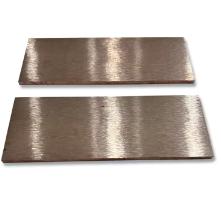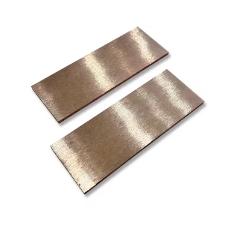**Title: Honda Civic Skid Plates: Should You Really Yank That Metal Shield?**
(Metal Skid Plate Honda Civic Okay To Remove?)
That mysterious metal plate under your Honda Civic. You see it during oil changes. Maybe you’ve scraped it over a steep driveway entrance. It looks tough, but honestly, does your daily commuter Civic *really* need it? The question pops up: “Honda Civic Skid Plate Okay To Remove?” Let’s dig into the dirt, the pros, and the potential cons of pulling that plate off.
**1. What Exactly is a Honda Civic Skid Plate?**
Think of it as armor for your car’s belly. It’s a protective panel, usually made of stamped steel, thick plastic, or sometimes aluminum composite materials. Honda installs it underneath the engine bay and sometimes extends it further back. Its main job? Shielding vital components from the hazards lurking below your car. We’re talking rocks kicked up on the highway, chunks of ice, deep snow drifts, road debris like fallen branches, and those dreaded accidental scrapes against steep curbs or uneven pavement. Without it, your oil pan, transmission housing, radiator bottom, power steering lines, and various sensors are much more exposed. It acts like a tough shell, taking the hit so your expensive engine parts don’t have to. While not designed for serious off-roading like a truck’s skid plates, it’s crucial urban armor for the Civic.
**2. Why Would Anyone Remove Their Civic’s Skid Plate?**
Several reasons make owners consider ditching the plate. The biggest one? Easier maintenance. Changing the oil and filter becomes significantly faster without wrestling the plate off first. Mechanics and DIYers alike appreciate the simpler access. Next, weight reduction. While not massive, removing steel plates shaves off pounds. For enthusiasts chasing every ounce for performance, it’s tempting. Cost is another factor. If the plate gets damaged, replacing it costs money. Removing it eliminates that future expense. Some owners dislike the aesthetic of seeing it hanging low, preferring a cleaner look. Others report reduced engine noise entering the cabin without the plate acting as a sound reflector. Finally, damaged plates can rattle or scrape annoyingly. Yanking it off seems like an instant fix for those noises.
**3. How Do You Actually Remove a Honda Civic Skid Plate?**
Removing it is usually straightforward. You’ll need basic tools: a socket wrench set, screwdrivers (Phillips and flathead), and possibly pliers. Safety first. Park on level ground, engage the parking brake firmly, and use proper jack stands if lifting the car. Never rely solely on a jack. Locate the plate under the front engine area. Identify the fasteners holding it. These are typically bolts, screws, or plastic clips around the perimeter. Some might be hidden near the wheel wells. Carefully remove each fastener. Plastic clips often need the center pin pushed in before the whole clip pulls out. Support the plate as you remove the last few fasteners to prevent it from falling. Once loose, gently lower it down. Inspect the mounting points on the car frame for any damage. Store the plate and fasteners safely if you might reinstall it later. Clean the area where the plate was attached. Check the exposed components for any existing damage you hadn’t noticed before.
**4. Practical Applications: When Keeping the Skid Plate Makes Sense**
Despite the reasons to remove it, keeping your Civic’s skid plate installed is often the smarter, safer choice. Think about your driving environment. Do you regularly drive on rough roads, gravel paths, or roads littered with debris after storms? The plate provides essential protection. Live where winter brings deep snow, ice chunks, and heavily salted roads? The plate shields vulnerable parts from corrosive salt spray and impact. Even simple things like navigating steep driveways, parking lot curbs, or poorly maintained city streets pose risks. That accidental scrape could rupture your oil pan without the plate’s buffer. Resale value matters too. Potential buyers might question why a protective factory part is missing, seeing it as neglect or a sign the car was driven hard. Functionally, the plate can slightly improve aerodynamics under the car and might help keep the engine bay cleaner. For most daily driving scenarios, the protection it offers far outweighs the minor convenience of removal.
**5. Honda Civic Skid Plate FAQs**
* **Will removing it void my warranty?** Generally, no, unless removing it directly causes damage Honda can prove. However, if a rock cracks your oil pan because the plate was off, that damage won’t be covered.
* **Does it affect performance or fuel economy?** Removing it saves a small amount of weight, maybe 10-15 lbs for a steel plate. The performance gain is negligible for street driving. Aerodynamic effects are minor and unlikely to noticeably change MPG.
* **Can I replace the metal plate with plastic?** Sometimes. Honda often uses plastic “splash shields” on other models or specific Civic trims. Check if a plastic OEM or aftermarket part fits your exact Civic year and model. Plastic is lighter and protects against water/salt splash but offers less impact protection than metal.
* **My plate is damaged. Should I replace it or just leave it off?** Replacing it is best for continued protection. A damaged plate might not fit right, could rattle, or offer reduced coverage. Leaving it off exposes components. Check prices for OEM or quality aftermarket replacements.
(Metal Skid Plate Honda Civic Okay To Remove?)
* **Is it illegal to drive without a skid plate?** No, there are no laws specifically requiring it. However, driving without it increases the risk of damage causing fluid leaks (oil, coolant), which could lead to hazardous road conditions or environmental spills – and those *can* have legal consequences.
Inquiry us
if you want to want to know more, please feel free to contact us. (nanotrun@yahoo.com)


